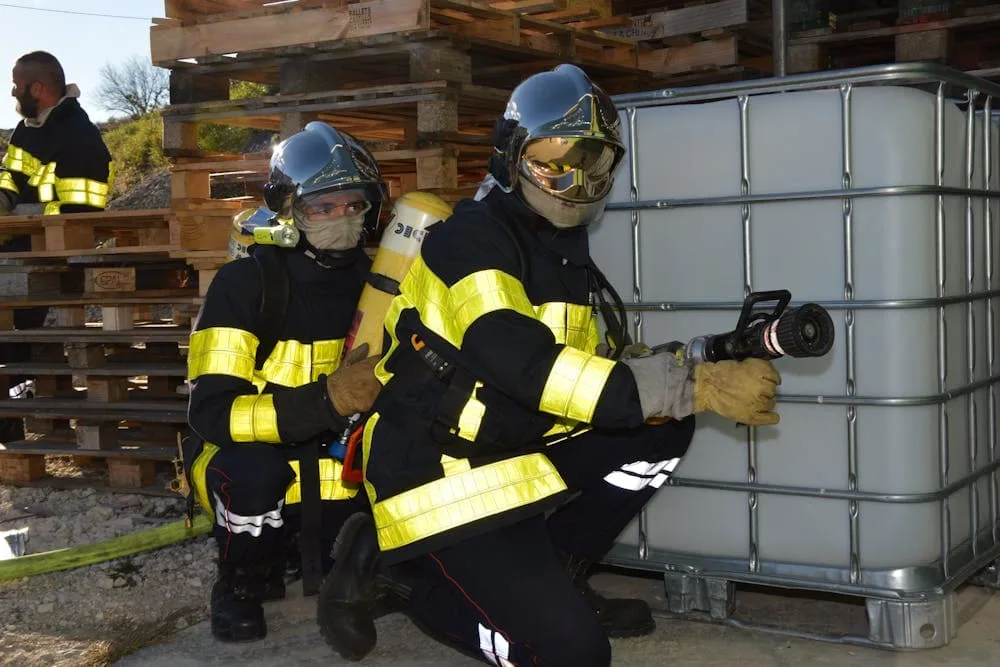Fire safety training is crucial for all organizations and businesses, regardless of size or industry. Proper preparation and education can literally save lives in the event of a fire. Fire safety training is a basic part of working environment safety that can’t be neglected. It outfits people with the information and abilities important to forestall, recognize, and take action during fires caught. This blog post will provide an overview of fire safety training, discuss its importance, cover key topics that should be included, and provide actionable recommendations for implementing a strong fire safety program.
What are the Benefits of Fire Safety Training?
Understanding the significance of fire safety training is principal. Besides the fact that it saves lives, it correspondingly limits property harm and disturbance to activities and productivity. By instructing representatives about fire risks and legitimate methods, associations can establish a more secure workplace for everybody. Let’s understand some important activities that help in maintaining a secure and safe working environment.
The Need for Regular Fire Safety Training
Many organizations provide initial fire safety information to new employees during onboarding. However, one-time training is not enough. Fire safety requires regular education as an integral part of an overall safety culture. Information needs to be reinforced, and employees should participate in drills on a periodic basis. Just as with any critical skill, fire safety knowledge and readiness will deteriorate over time without continuing education.
Maintaining Proficiency Through Fire Drills
Fire drills serve several important purposes. First, they act as a refresher to remind employees of proper protocols in high-stress situations. By actually simulating emergency scenarios, drills test readiness and identify gaps. Participating in hypothetical dangerous situations in a controlled environment also reduces panic during actual emergencies. Ultimately, regular practice sessions improve individuals’ fire safety proficiency as an ingrained set of behaviors.
Customizing to Specific Facilities
While general information on fire safety is relevant for many organizations, training must extend further to address factors directly related to each business’ physical facilities. For example, providing clear instructions on designated emergency exits and evacuation routes specific to a building layout is crucial. Education for leadership should also cover the operation of onsite fire protection systems. Training content should educate employees to respond appropriately based on their unique circumstances.
6 Major Fire Safety Training Topics to Cover While Training
The following topics provide an outline of information individuals should understand after completing fire safety training programs:
Preventative actions – Practices for reducing the risk of fires starting (e.g. following electrical safety procedures, avoiding common ignition sources)
Emergency notification – Proper protocol for activating fire alarms or contacting emergency services
Evacuation routes – Location-specific information on emergency exits and paths toward meeting points
Use of fire extinguishers – When/how to operate basic extinguishers based on the type of fire
Flammable materials – Procedures for safe handling and storage of combustible materials
Special assistance notifications – Instructions allowing mobility-impaired individuals to alert emergency evacuators
Some Additional Factors to Enhance Fire Safety Training!
Exhaustive fire well-being preparation includes three key components: suppression, detection, and prevention Individuals can effectively reduce fire risks by addressing each of these components. In addition to this, there are some additional factors that play a vital role in Fire Safety Training.
Getting Leadership Buy-In
For fire safety training programs to have a meaningful impact, they require buy-in from organizational leadership. Managers play a key role in reinforcing information and guiding teams during drills or actual events. When upper management visibly supports and participates in education initiatives, it communicates the vital importance of the content down through all levels. Leadership can’t just pay lip service to safety – they must help champion relevant training.
Making Time for Ongoing Training
For many companies, the biggest barrier to comprehensive, continuing fire safety education is simply a lack of time. Demands of normal operations make it difficult to carve out periods for drills or information sessions. However, this training pays invaluable dividends in preparedness that directly protects both employees and the continuation of business in emergency events.
Organizations can overcome timing obstacles by scheduling fire safety activities well in advance and setting expectations about mandatory participation. They can also implement short modular training elements that are less disruptive, including brief online courses, videos, emails, posters, and other formats requiring minimal time commitments while keeping information top of mind.
Empower Employees Through Education
Fire safety training enables employees to take an active role in their own well-being and the protection of colleagues and facilities. Equipped with proper knowledge, individuals become empowered actors ready to handle crises. Education provides awareness, skillsets, and confidence to take appropriate lifesaving actions during disasters. Instead of depending on rescue from emergency responders, informed employees can make all the difference in initially containing threats. Support staff development through comprehensive fire safety training measures tailored to your specific operations.
Final Thought
Fire Safety Training is an essential part of working environment well-being that requires progressing responsibility and speculation. By focusing on instruction, readiness, and consistency, associations can reduce fire risks and protect lives and property.

